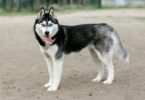What makes these compact companions so irresistible to families across the country? Their playful personalities and distinctive silhouettes have sparked a surge in popularity, blending curiosity with practicality for modern pet lovers.
This guide explores everything from their unique characteristics to daily care routines. Whether you're considering adoption or already share your home with one, you'll uncover actionable tips backed by veterinary insights. Learn how to navigate common challenges while celebrating their spirited nature.
We’ll break down hybrid varieties, health considerations, and bonding strategies tailored to their energetic temperament. By the end, you’ll understand why these crossbreeds continue winning hearts—and how to ensure they thrive in your care.
Overview of the Dachshund Mix Landscape
Why do these spirited hybrids capture the hearts of so many households? Originating from Germany’s hunting traditions, Dachshunds bring a bold personality and elongated frame to their crossbred offspring. Their genetic influence creates hybrids that balance curiosity with adaptability—traits modern pet lovers crave.
When paired with other breeds, their offspring inherit surprising combinations. A Labrador mix might showcase athleticism softened by Dachshund playfulness. A Chihuahua blend could emphasize compact size with amplified confidence. Each parent contributes unique features, from coat textures to energy levels.
Owners often praise these crosses for their loyalty and low-maintenance charm. Their manageable size suits apartment living, while their affectionate nature strengthens bonds with children. Many hybrids also exhibit fewer health issues than purebred counterparts—a key selling point for busy families.
Beyond practicality, there’s an emotional draw. These companions blend historical resilience with modern versatility. Whether snuggling on couches or exploring parks, they adapt seamlessly to diverse lifestyles. It’s this flexibility that makes them enduring favorites across generations.
Understanding the Unique Traits of Dog Breeds Dachshund Mix
Compact size meets big personality in these crossbreeds. Their elongated body structure and short legs create a silhouette unlike most hybrids, combining agility with surprising strength. This physique requires mindful handling—supporting their back during play helps prevent injuries common to their unique frame.
High energy defines their daily rhythm. They thrive on interactive games and short bursts of activity, balancing bursts of enthusiasm with cozy downtime. Early socialization shapes their confident yet affectionate temperament, making them adaptable to various households.
Lifespan varies across crossbred varieties, typically ranging 12-16 years. Genetic diversity often reduces breed-specific health risks, but regular vet checkups remain crucial. Smaller hybrids may enjoy longer life spans compared to larger counterparts.
Experts recommend structured routines to channel their curiosity positively. Puzzle toys and scent-based activities align with their hunting lineage. Understanding these traits simplifies care—like using harnesses instead of neck collars to protect their delicate spine during walks.
Exploring Popular Dachshund Mix Hybrids
From energetic adventurers to cozy companions, crossbred varieties offer something for every lifestyle. Their blended traits create pets that balance charm with practicality, adapting seamlessly to urban apartments or active households. Let’s dive into standout hybrids and what makes each unique.
Highlights from the Top Breeds
The Docker (Dachshund + Cocker Spaniel) combines curiosity with gentle affection. Its medium size and playful demeanor make it ideal for families with children. Daily walks and puzzle toys keep this hybrid mentally engaged.
For those seeking loyalty, the Dachsweiler (Dachshund + Rottweiler) offers protective instincts in a compact frame. Early socialization ensures its confidence remains balanced. This hybrid thrives in homes with structured routines.
The Papshund (Dachshund + Papillon) shines as a lap-loving companion. Its silky coat and cheerful personality suit quieter households. Moderate exercise needs align well with apartment living.
Families often favor the dachshund golden retriever mix for its sunny disposition. Unlike standard golden retrievers, this hybrid typically stays smaller while retaining a love for outdoor play. Weekly brushing manages its wavy coat.
Each crossbreed brings distinct care requirements. High-energy hybrids benefit from agility training, while calmer varieties excel as therapy pets. Matching their traits to your lifestyle ensures a joyful partnership.
Diverse Physical Characteristics in Mixed Breeds
Imagine a canine canvas painted with endless combinations of shapes and textures. Dachshund mixes showcase remarkable diversity in their physical traits, shaped by the genetic lottery of crossbreeding. These variations demand tailored care strategies to keep them healthy and comfortable.
Body Structure and Size Variations
Short legs and elongated torsos often dominate their silhouette, though proportions vary widely. Some inherit compact frames under 15 pounds, while others stretch taller with muscular builds. This structural diversity impacts mobility—staircases may challenge those with ultra-short limbs, requiring ramps or assistance.
Coat Types and Color Patterns
Their coats range from sleek single layers to dense double coats with weather-resistant textures. You might find smooth, wiry, or long-haired varieties, each needing specific grooming routines. Brushing frequency shifts from weekly sessions for short-haired types to daily care for flowing locks prone to tangling.
Color patterns add another layer of uniqueness. Solid hues like chocolate or cream blend with merle, dapple, or brindle markings. Lighter coats often need sun protection, while darker ones may show shedding more visibly. Regular baths with pH-balanced shampoos maintain skin health across all varieties.
These physical traits directly influence exercise needs. Compact builds thrive in indoor play spaces, while longer-legged hybrids benefit from mini Dachshund puppies outdoor adventures. Understanding your companion’s specific characteristics helps create a care plan that celebrates their individuality.
Temperament and Family Compatibility
How do these lively companions fit into bustling households? Their spirited nature often leans toward loyalty and playfulness, making them eager participants in family activities. Many thrive on human interaction, showing affection through gentle nudges or enthusiastic tail wags.
Early training proves crucial for shaping their behavior. Positive reinforcement works best—reward calm interactions with treats or praise. Consistency helps curb stubborn streaks, especially during mealtimes or walks.
Daily routines vary, but adaptability shines through. They adjust well to structured schedules, whether it’s morning play sessions or evening cuddles. Busy owners benefit from establishing predictable feeding times and designated quiet zones.
Compatibility with children depends on mutual respect. Supervision ensures gentle handling, particularly with younger kids. When introduced properly, these pets often form strong bonds with all family members, including other animals.
Harmony at home starts with understanding their needs. Create designated spaces for rest and play. Rotate toys to keep their curious minds engaged. With patience, even first-time parents can build lasting connections with these charismatic pups.
Health and Lifespan Insights
Maintaining vitality in your furry friend starts with understanding their unique health profile. Crossbred companions often enjoy robust longevity, with lifespans spanning 10-18 years depending on genetic influences. Proactive care helps them thrive through every life stage.
Common Health Considerations
Spinal issues remain a primary concern due to elongated body structures. Preventative measures like ramps for furniture access and avoiding high-impact jumps protect delicate backs. Joint supplements and weight management further reduce strain.
Regular activity proves essential—short walks paired with mental stimulation games keep muscles toned and minds sharp. Structured play sessions also curb destructive behaviors linked to boredom.
Lifespan Variations and Care Impact
Smaller hybrids often outlive larger counterparts by 2-4 years. Papillon crosses typically reach 16-18 years, while Rottweiler blends average 12-14. Consistent vet checkups catch early signs of heart conditions or allergies common across varieties.
Nutrition plays a starring role in longevity. High-quality proteins and omega-rich foods support coat health and mobility. Pair this with dental care routines to add 1-3 healthy years to your companion’s life.
Remember—every pet benefits from customized care. Tracking their energy levels and scheduling annual bloodwork creates a roadmap for enduring wellness. Your attentiveness today shapes their quality of life tomorrow.
Grooming Needs and Coat Maintenance
Grooming becomes a bonding ritual that keeps your companion healthy and radiant. Their coat type dictates care strategies—whether inherited from a retriever parent's dense fur or another breed's sleek texture. Let’s explore routines that enhance natural beauty while preventing common issues.
Daily Care Routines
Smooth coats benefit from weekly brushing with rubber mitts to distribute oils. Wiry textures need slicker brushes every 3 days to prevent matting. Long-haired varieties require daily attention—focus on chest and leg feathering where tangles form.
Ears demand weekly checks. Use vet-approved wipes for gentle cleaning, especially in floppy-eared hybrids prone to moisture buildup. Trim nails monthly to protect their posture during walks.
Professional Grooming Tips
Schedule trims every 6-8 weeks for curly or double-coated pets. Ask groomers to use thinning shears around paw pads for comfort. Dematting sprays work wonders between appointments—spritz lightly before combing stubborn knots.
Enhance shine with oatmeal baths for sensitive skin. Blow-dry on low heat after washing, brushing upward to lift the undercoat. These steps maintain skin health while showcasing their unique traits.
Consistent care reduces shedding and detects early skin issues. Your effort pays off in wagging tails and glossy coats that turn heads at the park.
Exercise and Activity Requirements
Balancing energy levels requires understanding their unique exercise needs. Activity requirements depend heavily on inherited traits—some thrive with vigorous outdoor adventures, while others prefer cozy indoor play. Tailoring routines prevents boredom and supports both physical health and mental sharpness.
Indoor vs. Outdoor Play Ideas
Indoor spaces become playgrounds with puzzle feeders or hide-and-seek games using treats. Rotating toys weekly maintains novelty, while tug-of-war ropes channel energy constructively. For apartments, short training sessions reinforce commands while burning calories.
Outdoor enthusiasts benefit from scent trails or agility courses in secure yards. Walks should prioritize exploration over distance—15-minute sniff sessions satisfy curiosity better than hour-long marches. Always match intensity to your companion’s build; low-impact activities protect delicate spines.
Plenty of daily movement prevents destructive habits like chewing or excessive barking. High-energy hybrids may need two 20-minute play blocks, while calmer types stay content with gentle fetch. Observe their cues—panting or lagging signals it’s time to rest.
Adapt activities to their personality. Social pets enjoy dog park visits, while shy ones prefer solo backyard adventures. Consistency matters most: a mix of structured play and free exploration keeps them thriving in any environment.
Training and Behavioral Strategies
Building a strong bond with your furry friend starts with effective communication. Their spirited personality requires clear guidance to channel energy positively. Early socialization and consistent routines help them adapt to household rules while respecting their unique traits inherited from parent breeds.
Basic Commands and Obedience
Start with foundational cues like “sit,” “stay,” and “leave it.” Use high-value treats during 10-minute sessions to maintain focus. For stubborn moments, redirect attention with toys instead of repeating commands. Make sure rewards follow desired actions immediately—this reinforces connections between behavior and positive outcomes.
Socialization Techniques
Introduce new environments gradually. A cocker spaniel cross might need extra exposure to loud noises due to sensitive hearing. Arrange playdates with calm pets to build confidence. Practice handling paws and ears daily to reduce grooming stress later.
Consistency is key. Alternate walks between parks and quiet streets to broaden experiences. Pair unfamiliar sounds like traffic with treats to create positive associations. Over time, these steps nurture a well-adjusted companion ready for life’s adventures.
Living Arrangements and Space Considerations
Tailoring your home environment ensures these hybrids thrive in their surroundings. Physical traits like leg length and body shape directly influence their spatial needs. Compact builds with shorter legs often adapt well to apartments, while longer-legged varieties may crave backyard exploration.
For smaller homes, prioritize vertical space. Sturdy pet stairs or ramps help companions navigate furniture safely. Open floor plans allow playful dashes without risking collisions. Those with elongated bodies benefit from orthopedic beds placed in quiet corners to support spinal health.
Outdoor enthusiasts like golden retriever crosses need secure yards for fetch or scent games. Calmer mixes, such as Papillon blends, thrive in cozy apartments with puzzle toys. Always match activity zones to their energy levels—high-energy hybrids require designated play areas to burn off steam.
Assess your space before adoption. Measure doorways for wheelchair access if mobility issues arise. Use baby gates to block hazardous areas like steep stairs. Rotate toys weekly to keep minds engaged without needing vast square footage.
Understanding spatial needs prevents stress and injuries. A well-planned home becomes a sanctuary where these lively companions flourish physically and emotionally.
Integrating Dachshund Mixes with Other Pets
Creating a peaceful multi-pet home starts with thoughtful planning. Gradual introductions and scent exchanges help reduce territorial behaviors. Experts recommend starting with separate spaces before allowing face-to-face meetings.
Compatibility with Cats; Adapting to Multi-Pet Households
When introducing feline companions, use baby gates for visual access without physical contact. Swap bedding between animals to familiarize them with each other's scent. Some may display curiosity, while others need weeks to adjust.
Existing pets might feel threatened by newcomers. Parallel feeding—serving meals on opposite sides of a door—builds positive associations. Always supervise initial interactions and intervene if tensions rise.
For households with multiple dogs, establish clear routines to prevent competition. Structured playtime and individual attention ensure all pets feel secure. Owners play a crucial role in modeling calm behavior during transitions.
Reward peaceful interactions with treats and praise. Over time, shared activities like group walks strengthen bonds. Patience pays off, creating a harmonious environment where every companion thrives.
What to Expect When Adopting a Dachshund Mix
Adopting a spirited companion requires thoughtful preparation to ensure a smooth transition. Research shelters and breeders thoroughly, prioritizing transparency about health histories and behavioral traits. Ask for documentation of veterinary checks and genetic screenings to assess long-term wellness needs.
The Adoption Process and Considerations
Reputable sources prioritize the animal’s welfare over quick sales. Visit facilities in person to observe living conditions and parent temperaments. Ethical breeders will explain lineage details and provide lifetime support for questions.
Prepare a list of essential inquiries: What health tests were performed? How does this crossbreed typically interact with children or other pets? Understanding energy levels and grooming needs helps match your lifestyle.
Consider average life expectancy and associated care costs. Some hybrids may need specialized diets or physical therapy for spinal support. Discuss exercise routines and training methods with current caretakers to gauge compatibility.
Reflect on your capacity to meet their needs long-term. While their affectionate nature charms many, their unique physique demands mindful handling. Balancing enthusiasm with realistic expectations creates lasting bonds built on mutual understanding.
Essential Care Tips for Daily Wellbeing
Establishing consistent daily habits lays the foundation for your companion's lifelong health and happiness. Start mornings with a predictable feeding schedule—measure portions to maintain ideal weight and prevent spinal strain. Pair breakfast with a brisk walk to stimulate their mind and body, adapting the route to keep exploration engaging.
Midday play sessions balance energy levels. Rotate puzzle toys or hide treats in snuffle mats to satisfy their natural curiosity. These activities prevent boredom while reinforcing problem-solving skills inherited from hunting lineages.
Evening routines should prioritize relaxation. Gentle brushing sessions not only maintain coat health but also strengthen your bond. Use this time to check paws for debris and trim nails monthly to ensure comfort during walks.
Nutrition plays a starring role—opt for high-quality kibble with lean proteins and omega fatty acids. Supplement with dental chews to support oral hygiene. Small actions like fresh water access and temperature-controlled sleeping areas make big differences in their comfort.
Consistency transforms these steps into effortless rituals. By aligning care with their natural rhythms, you create a stress-free environment where vitality thrives. Your attentiveness today shapes their wellness for years to come.
Owner’s Guide to Nutrition and Diet
What fuels your companion's playful energy and keeps their tail wagging for years? Tailored nutrition forms the cornerstone of their wellbeing, blending science with practical meal strategies. Let’s explore how to create balanced eating plans that adapt to unique needs.
Meal Planning and Feeding Schedules
Portion control proves vital for maintaining healthy weight and spinal support. Measure meals using a kitchen scale—adults typically thrive on ½ to 1 cup of high-quality kibble daily, split into two feedings. Active hybrids like golden retriever crosses may need 20% more calories during growth phases.
Puppies benefit from three smaller meals to stabilize energy levels. Transition to adult formulas around 12 months, adjusting protein ratios as activity changes. Senior pets often prefer softer textures and joint-support nutrients.
Supplement Recommendations for Long-Term Health
Omega-3 fatty acids promote glossy coats and reduce inflammation. Glucosamine supplements help protect joints in longer-bodied companions. Always consult your vet before adding new products—they might recommend probiotics for sensitive digestion or vitamin E for skin health.
Seasonal adjustments matter too. Increase hydration support during summer with broth-enhanced meals. Winter months might call for calorie-dense options for cold-weather adventurers.
Families should schedule annual nutrition reviews with their veterinarian. Track eating habits and energy levels to spot necessary changes early. With thoughtful planning, every bowl becomes a building block for lifelong vitality.
Lifestyle Advice for Busy Families and Pet Lovers
How can busy households ensure their lively companion thrives without adding stress? Start by weaving care tasks into existing routines. Pair morning coffee prep with a quick grooming session—brush their coat while waiting for the kettle. This multitasking approach keeps everyone on schedule.
Engagement doesn’t require hours of free time. Involve children in 10-minute play bursts using interactive toys. Hide treats in puzzle feeders during homework sessions—this keeps paws busy while little hands focus on math sheets. Rotate toys weekly to maintain novelty.
Tailor activities to their unique personality. High-energy types might enjoy backyard obstacle courses during soccer practice. Calmer companions prefer snuggle time while reading bedtime stories. Match their preferences to family rhythms for seamless integration.
Create shared responsibilities. Assign kids age-appropriate tasks like refilling water bowls or brushing sessions. Use mealtime as training opportunities—practice “sit” commands before placing food down. These micro-interactions strengthen bonds without overwhelming schedules.
Balance emerges through smart planning. Schedule walks during commute routes or combine park visits with weekend errands. Sync nap times with work calls for quiet productivity windows. Small adjustments create harmony between pet care and daily demands.
Final Reflections on Finding Your Perfect Canine Companion
What defines the ideal furry family member? This journey through care essentials, temperament insights, and lifestyle alignment highlights how informed choices create lasting bonds. Every pet brings unique needs—whether it’s spinal support during play or mental stimulation through scent games.
Matching a companion’s energy and traits to your routine ensures harmony. Consider space constraints, grooming commitments, and activity preferences. For those drawn to affectionate personalities, the sunny disposition of a golden retriever blend might resonate deeply.
Training lays the groundwork for mutual respect. Consistent routines and positive reinforcement nurture confidence in both pet and owner. Health-conscious decisions—like joint supplements or tailored nutrition—extend joyful years together.
Reflect on your daily rhythms. Can you accommodate bursts of playfulness or quieter cuddle sessions? Trusting expert guidance while honoring your household’s dynamics leads to fulfilling partnerships.
Welcoming a loyal friend into your life is a transformative experience. With patience and preparation, you’ll unlock endless moments of laughter, loyalty, and shared adventures.
FAQ
Are dachshund mixes prone to specific health issues?
These hybrids may inherit risks like intervertebral disc disease (IVDD) from their dachshund parent or joint concerns from larger breeds. Regular vet checkups and weight management help mitigate these risks.
How much exercise does a dachshund golden retriever mix need daily?
The Golden Dox typically requires 45–60 minutes of activity split between walks and playtime. Their retriever heritage often gives them higher energy than pure dachshunds.
Do short-legged mixes adapt well to apartment living?
Yes, most thrive in smaller spaces if given daily exercise. Their compact size suits urban homes, but provide ramps to protect their backs from excessive stair climbing.










Leave a Comment